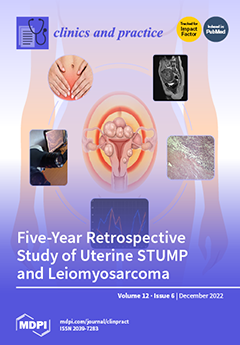The antibacterial and anti-biofilm effects of
Hypericum perforatum oil against the common pathogens of periodontitis (
Escherichia coli,
Streptococcus mutans,
Staphylococcus aureus,
Enterococcus faecalis,
Porphyromonas gingivalis) was investigated. Disk diffusion (DD), minimum inhibitory concentration (MIC), and minimum bactericidal
[...] Read more.
The antibacterial and anti-biofilm effects of
Hypericum perforatum oil against the common pathogens of periodontitis (
Escherichia coli,
Streptococcus mutans,
Staphylococcus aureus,
Enterococcus faecalis,
Porphyromonas gingivalis) was investigated. Disk diffusion (DD), minimum inhibitory concentration (MIC), and minimum bactericidal concentration (MBC) approaches were applied to test the antimicrobial effects. In order to determine the anti-biofilm effects, the amount of bacterial biofilm formation was assessed using the microtiter plate technique. The anti-biofilm effects were then confirmed by determining the minimum biofilm inhibitor concentration (MBIC). The MIC, MBC, MBIC, and DD values were 64, 256, 512 μg/mL, and 14 mm for
Staphylococcus aureus; 128, 256, 512 μg/mL, and 16 mm for
Streptococcus mutans; 256, 512, 256 μg/mL, and 20 mm for
Escherichia coli; 32, 128, 512 µg/mL, and 16 mm for
Enterococcus faecalis; and 64, 128, 256 µg/mL, and 15 mm for
Porphyromonas gingivalis, respectively. According to our results,
Hypericum perforatum oil has antibacterial and anti-biofilm properties against the common bacteria associated with periodontitis.
Full article






